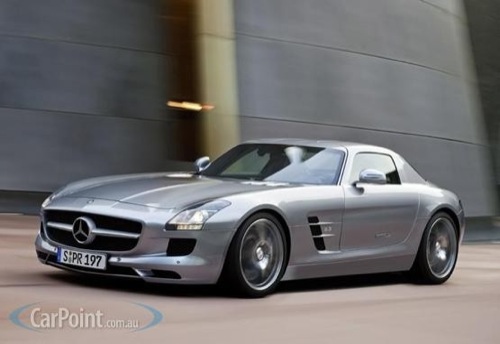 |
| 2011 Mercedes S63 AMG |
 |
| 2011 Mercedes S63 AMG |
 |
| 2011 Mercedes S63 AMG |
 |
| 2011 Mercedes S63 AMG |
 |
| 2011 Mercedes S63 AMG |
Mercedes has released today the first details of the new 2011 Mercedes S63 AMG which will be launched in September this year. The 2011 Mercedes S63 AMG will be powered by the new AMG 5.5-liter V8 biturbo engine and will also be available with an additional AMG Performance package.
Without the performance package, the 2011 Mercedes S63 AMG will develop 400 kW (544 hp) at 5500 rpm and 800 Nm between 2000 and 4500 rpm. The top speed of the 2011 Mercedes S63 AMG is rated at 250 km/h, electronically limited, and the carmaker says it can rocket from 0 to 100 km/h in 4.5 seconds.
2011 Mercedes S63 AMG is 3.9 litres more economical than the preceding model powered by the naturally aspirated AMG 6.3-litre V8 – despite an increase in output by 14 kW (19 hp) resp. 34 kW (46 hp) and in torque by 170 and 270 newton metres. Engine specialists consider this achieved fuel saving of more than 25 percent to be nothing less than a quantum leap. CO2 emissions have likewise been significantly reduced: at 246 grams per kilometre, the figure is 28.5 percent lower than for the previous model.
Two turbochargers located next to the cylinder banks supply the eight cylinders with fresh air. At their maximum speed of 185,000 rpm under full load, the two turbochargers force 1750 kg of air into the combustion chambers per hour. The maximum charge pressure is 1.0 bar, and 1.3 bar with the AMG Performance package. Thanks to their specific, compact construction – the turbine housings are welded to the exhaust manifold – there are significant space advantages and the catalytic converters also heat up more rapidly. The new AMG V8 is the first turbocharged engine to dispense with the usual blow-off valve. This neat solution enabled the compressor housing to be made extremely compact. To ensure agile responsiveness with no time lag, all the air ducts in the intake tract are as short as possible. The wastegate valve, which reduces the pressure in the exhaust system during negative load changes, is vacuum-controlled via an electropneumatic converter. This allows dethrottling under partial loads, which in turn lowers the fuel consumption.





No comments:
Post a Comment